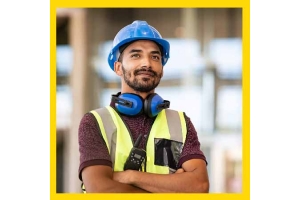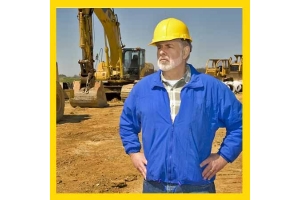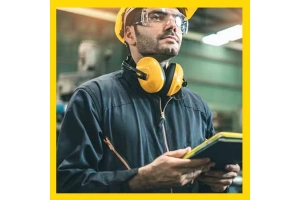Currency
August 18, 2018
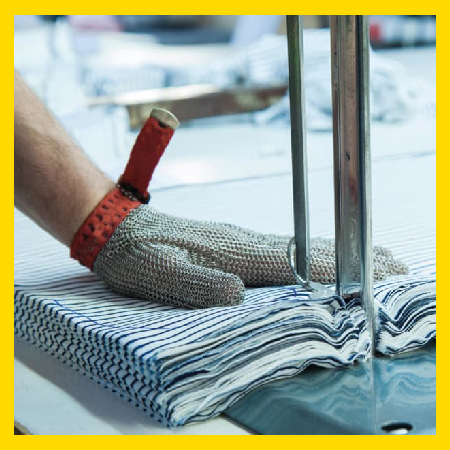
Personal Protective Equipment (PPE), such as gloves, are critical to protect employees whilst at work. The use of PPE is dictated by the applicable legislation and the relevant environmental considerations unique to each workplace. This article considers the legal requirements for the United Arab Emirates and the standards adopted by construction companies to mitigate any potential for a workplace accident.
The importance of PPE cannot be overstated, and an understanding of what is required at law and what’s recommended as ‘best international practice’ is important. In a country such as the UAE, home to one of the world’s tallest buildings, the construction industry has and continues to be one of considerable size and economic importance. At times, approximately 25% of the world’s cranes have been located within Dubai. Add to this the unique climate where temperatures can reach up to 50 degrees Celsius during the summer months, it becomes inherently clear that suitable PPE for construction workers is of vital importance. PPE, however, is no substitute for on-site safety measures and compliance with all safety instructions. PPE includes items such as protective head covers (helmets), protective gloves, eye and ear protection, high visibility clothing, safety footwear, safety harnesses and respiratory protective equipment.
Different tasks, and different jobs require different PPE. The role of assessing the suitability of PPE for each specific job falls on the safety manager.
One of the most obvious considerations in the UAE is to consider the impact the weather has in selecting appropriate PPE. All UAE construction sites, during the hotter summer months, must shut down all work during the hottest part of the day, usually 12 – 4pm; however, heat-related stresses as a result of the extreme heat during the year impacts many workers. Companies need to be mindful that PPE used on a particular construction site in the UK will require significant adjustment in the UAE. There also should be careful consideration when purchasing PPE that matches the work environment, and in this way should also match the temperature on the site. A very good example would be the use of gloves. Any construction site creates many hazards for workers’ hands, but a sturdy thick glove may be inappropriate if the wearer finds the temperature unbearable and the glove becomes slippery due to excess sweat. Companies therefore need to research and purchase the most appropriate gloves in this region that afford the utmost protection, with the least discomfort in searing temperatures. The range of different exposures leads to the recommendation that the safety team assess the risk for each task and select gloves that provide specialised protection.
PPE has been defined by the Abu Dhabi Occupational Safety and Health Centre as:
“Any device, appliance or equipment (including clothing or sunscreen affording protection against one weather) designed to be worn or be held by an individual for protection against on or more health and safety hazards, or minimise their exposure to workplace risks. It includes, but is not limited to, items such as facemasks and respirators, eye protection, high visibility clothing, coveralls, goggles, helmets, safety harnesses, gloves and footwear.”
Unlike many other nations, however, the UAE does not have a set of standalone legislation to provide for health and safety in the workplace; instead health and safety provisions are found within a number of Federal laws as well as local laws and regulations, some of which are based upon acknowledged international standards.
At a Federal level, the UAE does not have a standalone piece of health and safety legislation, rather health and safety provisions are to be found throughout a number of Federal Laws. Federal Law No. (8) of 1980 on the Regulation of Labour Relations (the “Labour Law”) contains a large proportion of the health and safety provisions, apply to the whole of the UAE.
The Labour Law places liability upon the employer to ensure that adequate health and safety measures are implemented. Article 91 of the Labour Law states that “every employer shall provide adequate preventive equipment to protect Employees against the dangers of employment accidents and occupational diseases that may occur during work, and also against fire hazards and other hazards that may result from the use of machines and other equipment.”
However, Article 91 of the Labour Law continues to state that “Every Employee shall use the protective equipment and the clothing supplied to him for this purpose, shall comply with all instructions given by the Employer to protect him against hazards, and shall not take any action liable to hamper compliance with such instructions.” Thus requiring some level of responsibility and liability also rests with the employee.
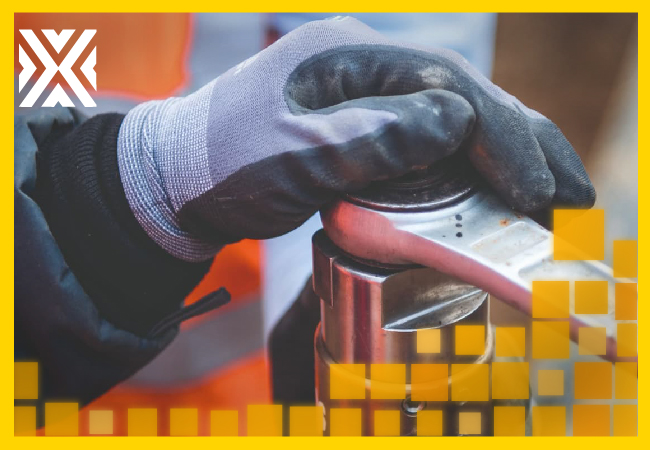
The Dubai Municipality (Public Health and Safety Department) oversees health and safety regulation throughout the Emirate of Dubai. It has established a number of local regulations and orders to assist in supplementing the Federal regime.
Chapter IV of Local Order No. (61) of 1991 on the Environment Protection Regulations in the Emirate of Dubai provides for general Occupational Health and Safety regulations to be complied with throughout the Emirate. Article 38(1) in particular requires that employers must “Ensure that the worker works in the manner specified by the regulations and with the use of protective devices designed for his safety, which shall be provided continuously”. Further, Article 39(2) places a burden on the employee to report to his employer or supervisor in the event that there is an absence of or any defect in such protective devices which may place him in danger.
The Dubai Code of Construction Safety Practice also provides for more specific guidance and regulation with regards to PPE. Chapter 4 of the Code of Construction Safety Practice specifically requires that “The contractor shall provide at his expense, personal protective equipment (PPE) required for different operations and shall take all necessary measure to ensure that PPE are effectively worn by employees” (Article 4.1.1).
Chapter 4 of the Code of Construction Safety Practice further provides specifications regarding the nature and type of PPE considered suitable and required for certain operations, including specifications relating to the protection of the head, eyes and face, hearing, feet and hands amongst others.
The Code of Construction Safety Practice requires that the contractor create a “safety plan” part of which should include a consideration of required PPE, taking a similar risk-based approach to that established under OSHAD-SF.
The importance of PPE cannot be overstated, and an understanding of what is required at law and what’s recommended as ‘best international practice’ is important. In a country such as the UAE, home to one of the world’s tallest buildings, the construction industry has and continues to be one of considerable size and economic importance. At times, approximately 25% of the world’s cranes have been located within Dubai. Add to this the unique climate where temperatures can reach up to 50 degrees Celsius during the summer months, it becomes inherently clear that suitable PPE for construction workers is of vital importance. PPE, however, is no substitute for on-site safety measures and compliance with all safety instructions. PPE includes items such as protective head covers (helmets), protective gloves, eye and ear protection, high visibility clothing, safety footwear, safety harnesses and respiratory protective equipment.
Environmental considerations
Different tasks, and different jobs require different PPE. The role of assessing the suitability of PPE for each specific job falls on the safety manager.
One of the most obvious considerations in the UAE is to consider the impact the weather has in selecting appropriate PPE. All UAE construction sites, during the hotter summer months, must shut down all work during the hottest part of the day, usually 12 – 4pm; however, heat-related stresses as a result of the extreme heat during the year impacts many workers. Companies need to be mindful that PPE used on a particular construction site in the UK will require significant adjustment in the UAE. There also should be careful consideration when purchasing PPE that matches the work environment, and in this way should also match the temperature on the site. A very good example would be the use of gloves. Any construction site creates many hazards for workers’ hands, but a sturdy thick glove may be inappropriate if the wearer finds the temperature unbearable and the glove becomes slippery due to excess sweat. Companies therefore need to research and purchase the most appropriate gloves in this region that afford the utmost protection, with the least discomfort in searing temperatures. The range of different exposures leads to the recommendation that the safety team assess the risk for each task and select gloves that provide specialised protection.
PPE has been defined by the Abu Dhabi Occupational Safety and Health Centre as:
“Any device, appliance or equipment (including clothing or sunscreen affording protection against one weather) designed to be worn or be held by an individual for protection against on or more health and safety hazards, or minimise their exposure to workplace risks. It includes, but is not limited to, items such as facemasks and respirators, eye protection, high visibility clothing, coveralls, goggles, helmets, safety harnesses, gloves and footwear.”
Unlike many other nations, however, the UAE does not have a set of standalone legislation to provide for health and safety in the workplace; instead health and safety provisions are found within a number of Federal laws as well as local laws and regulations, some of which are based upon acknowledged international standards.
At a Federal level, the UAE does not have a standalone piece of health and safety legislation, rather health and safety provisions are to be found throughout a number of Federal Laws. Federal Law No. (8) of 1980 on the Regulation of Labour Relations (the “Labour Law”) contains a large proportion of the health and safety provisions, apply to the whole of the UAE.
The Labour Law places liability upon the employer to ensure that adequate health and safety measures are implemented. Article 91 of the Labour Law states that “every employer shall provide adequate preventive equipment to protect Employees against the dangers of employment accidents and occupational diseases that may occur during work, and also against fire hazards and other hazards that may result from the use of machines and other equipment.”
However, Article 91 of the Labour Law continues to state that “Every Employee shall use the protective equipment and the clothing supplied to him for this purpose, shall comply with all instructions given by the Employer to protect him against hazards, and shall not take any action liable to hamper compliance with such instructions.” Thus requiring some level of responsibility and liability also rests with the employee.

DUBAI
The Dubai Municipality (Public Health and Safety Department) oversees health and safety regulation throughout the Emirate of Dubai. It has established a number of local regulations and orders to assist in supplementing the Federal regime.
Chapter IV of Local Order No. (61) of 1991 on the Environment Protection Regulations in the Emirate of Dubai provides for general Occupational Health and Safety regulations to be complied with throughout the Emirate. Article 38(1) in particular requires that employers must “Ensure that the worker works in the manner specified by the regulations and with the use of protective devices designed for his safety, which shall be provided continuously”. Further, Article 39(2) places a burden on the employee to report to his employer or supervisor in the event that there is an absence of or any defect in such protective devices which may place him in danger.
“effective PPE and PPE legislation is without a doubt a necessary requirement within the UAE due to the extensive prevalence of ever taller and more complicated construction work, and the unique climate in which construction workers are required to work”
The Dubai Code of Construction Safety Practice also provides for more specific guidance and regulation with regards to PPE. Chapter 4 of the Code of Construction Safety Practice specifically requires that “The contractor shall provide at his expense, personal protective equipment (PPE) required for different operations and shall take all necessary measure to ensure that PPE are effectively worn by employees” (Article 4.1.1).
Chapter 4 of the Code of Construction Safety Practice further provides specifications regarding the nature and type of PPE considered suitable and required for certain operations, including specifications relating to the protection of the head, eyes and face, hearing, feet and hands amongst others.
The Code of Construction Safety Practice requires that the contractor create a “safety plan” part of which should include a consideration of required PPE, taking a similar risk-based approach to that established under OSHAD-SF.
